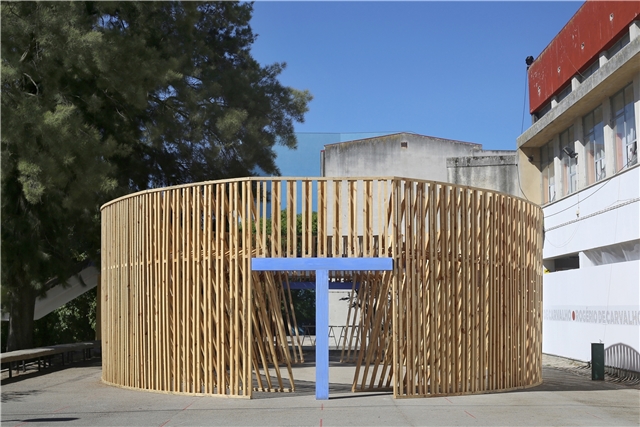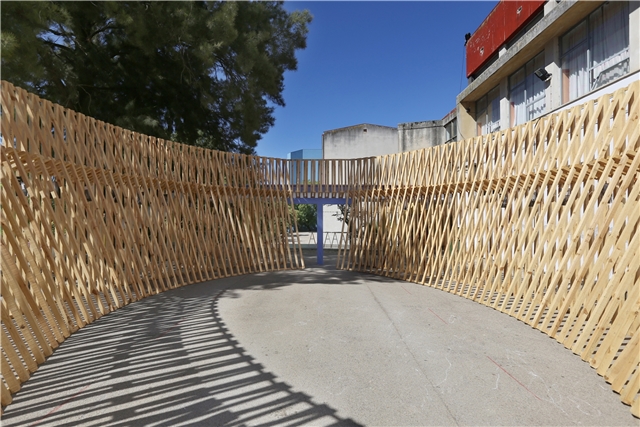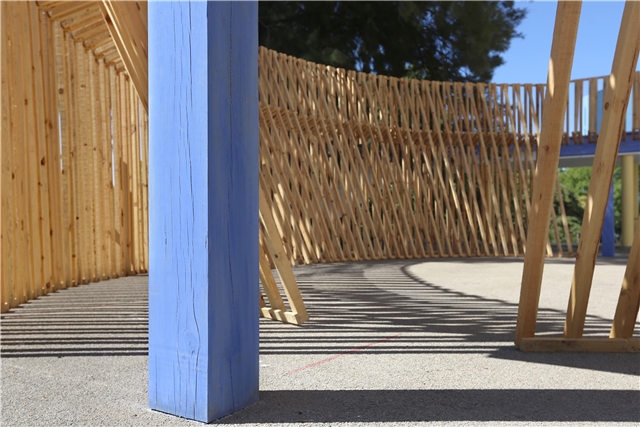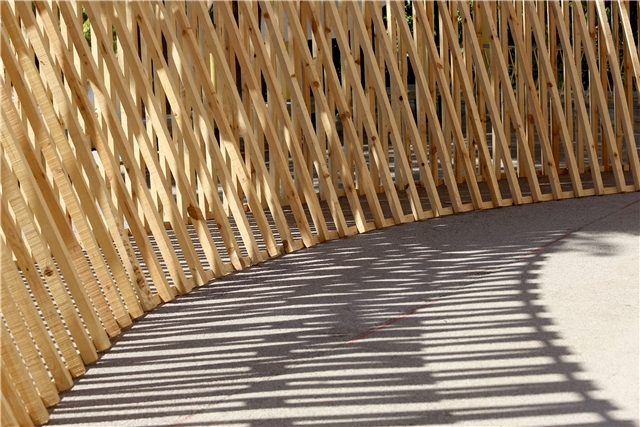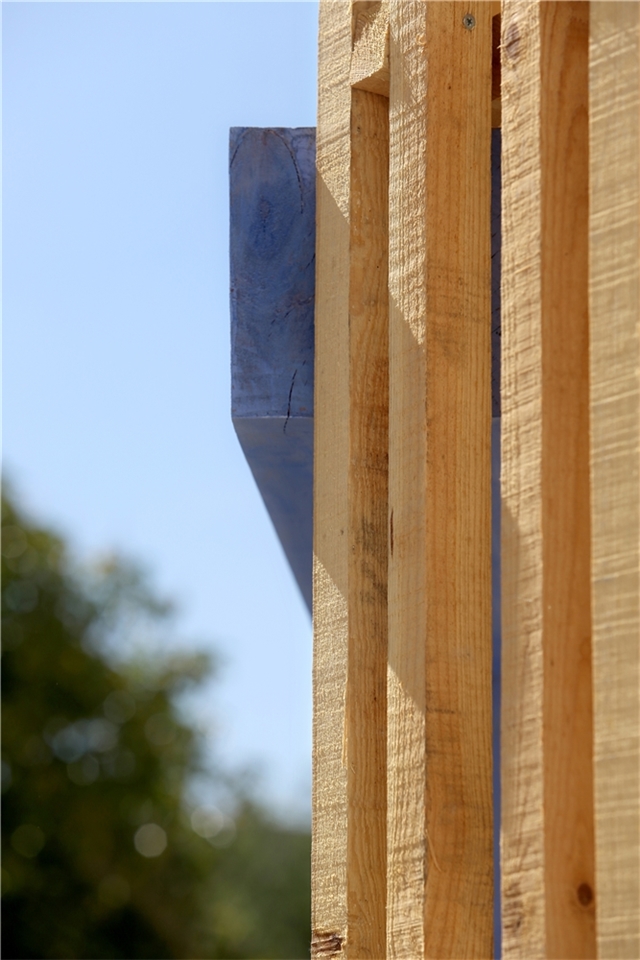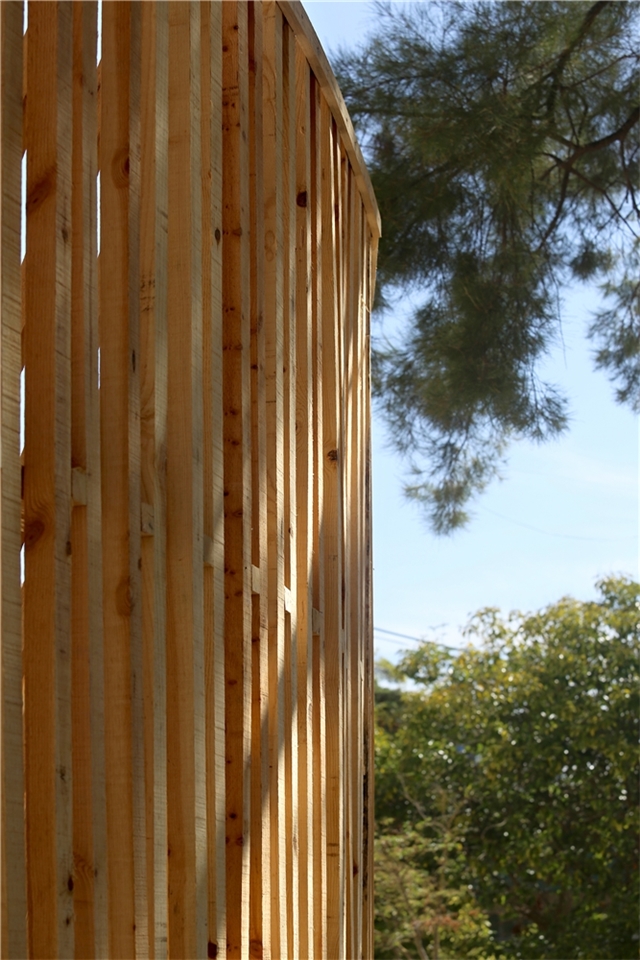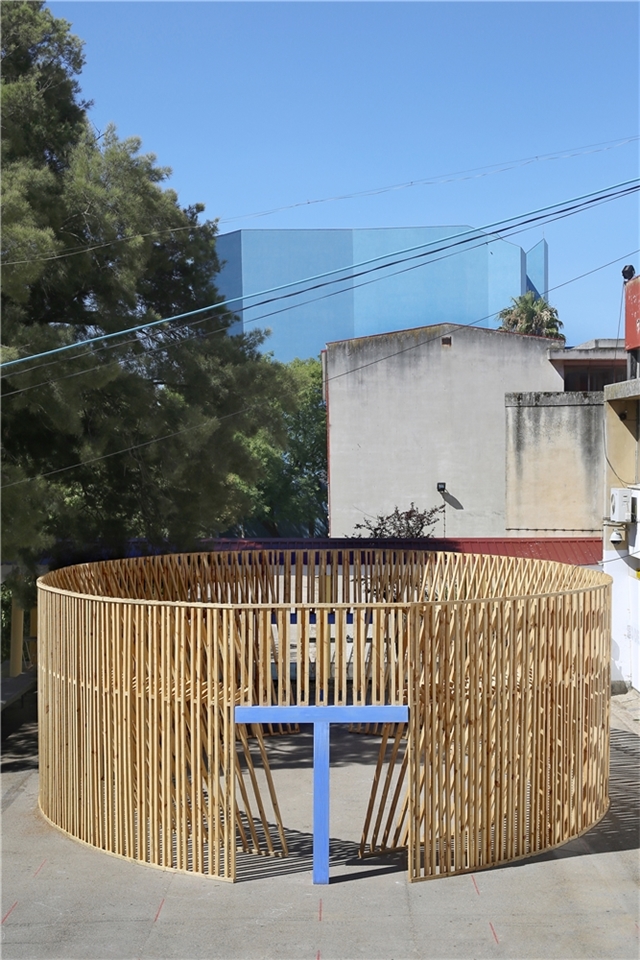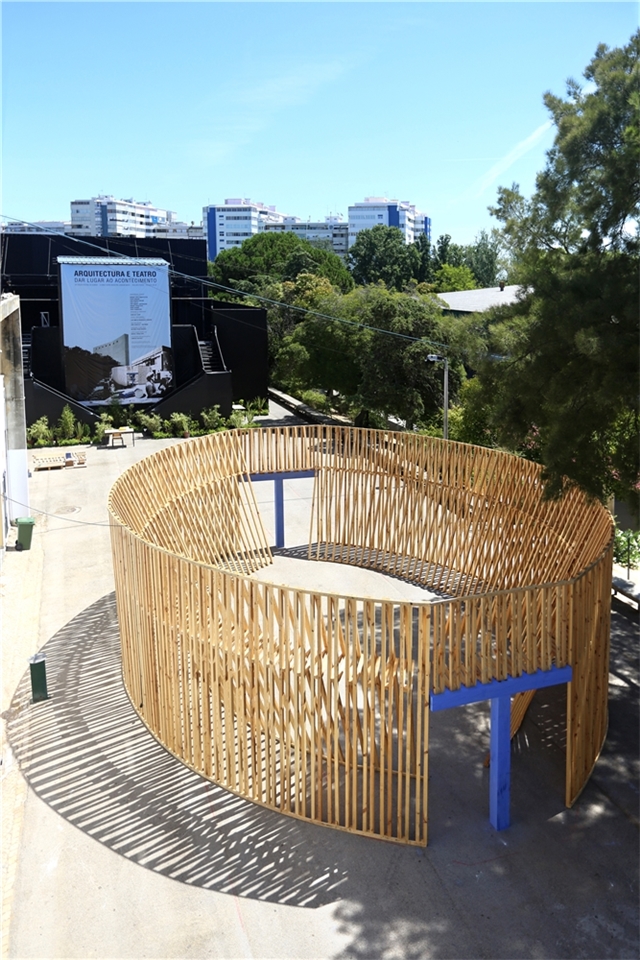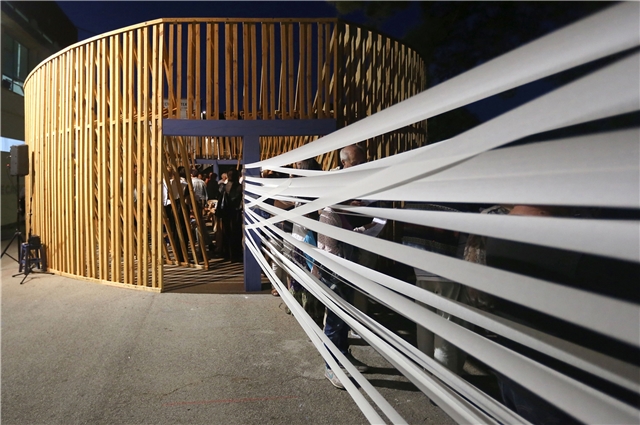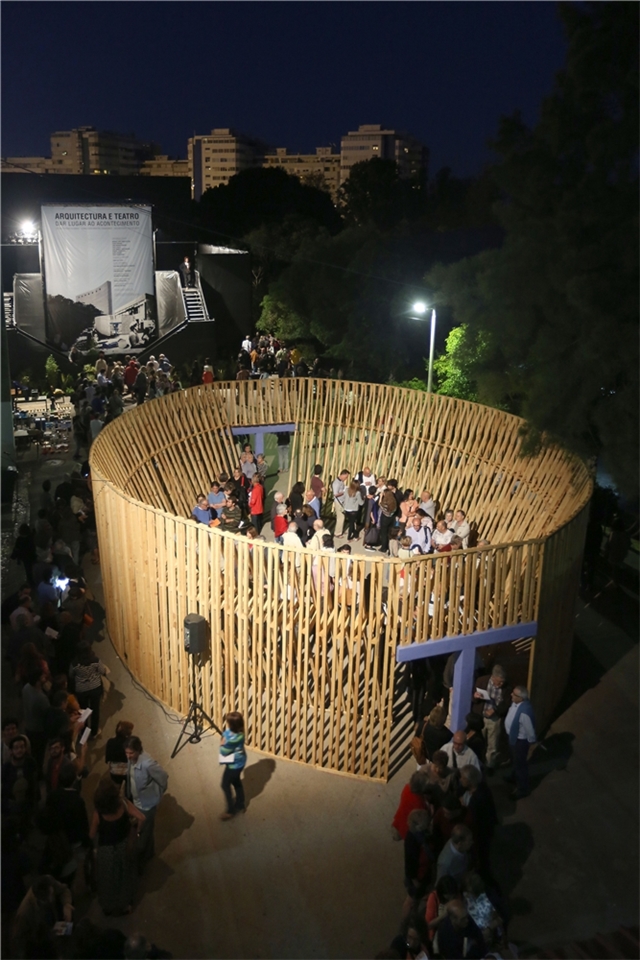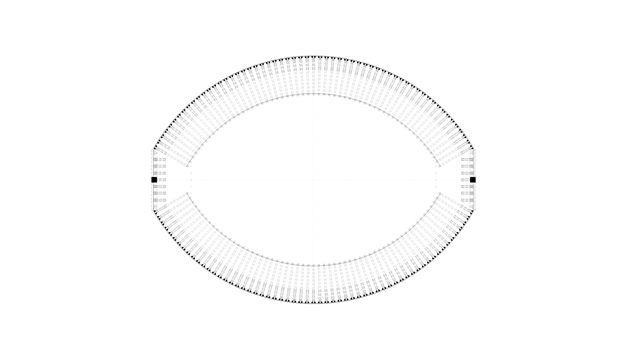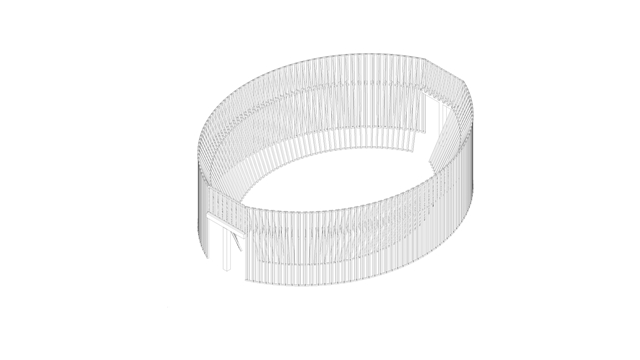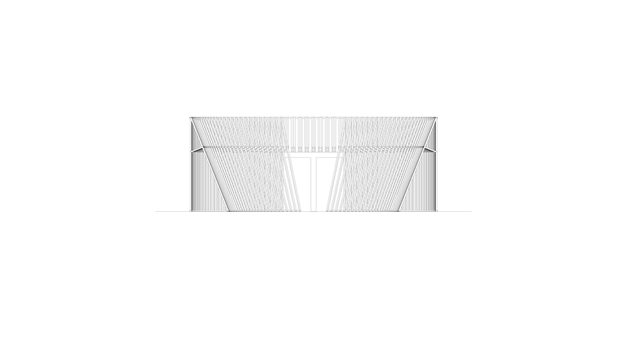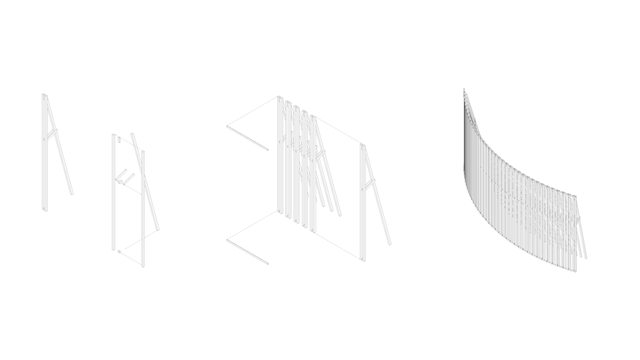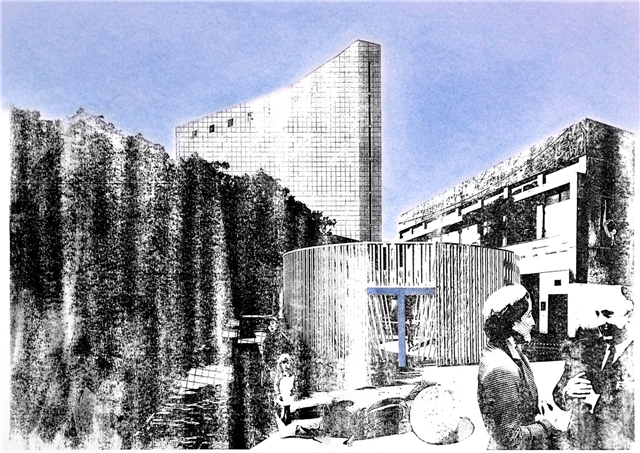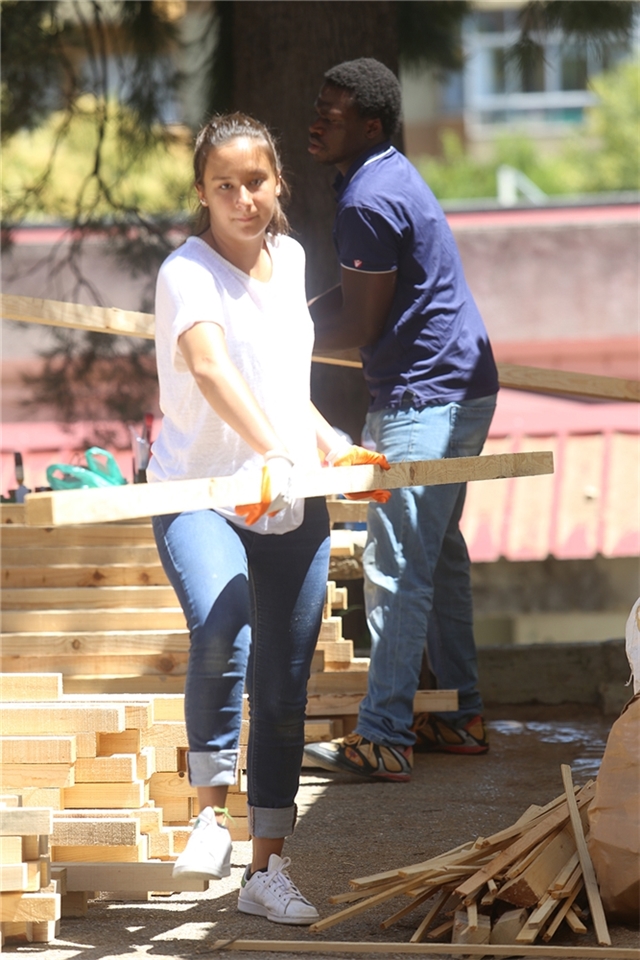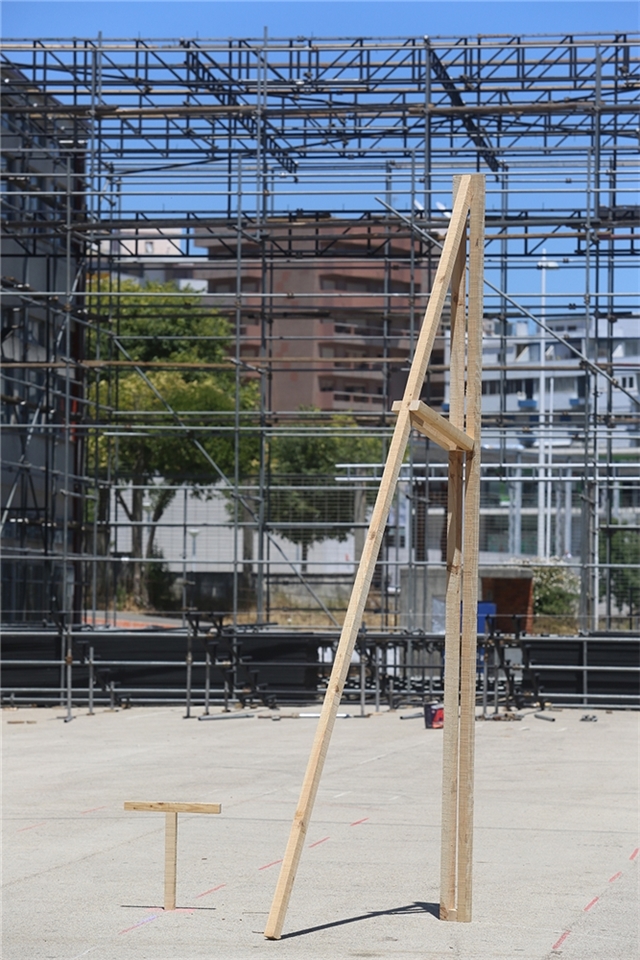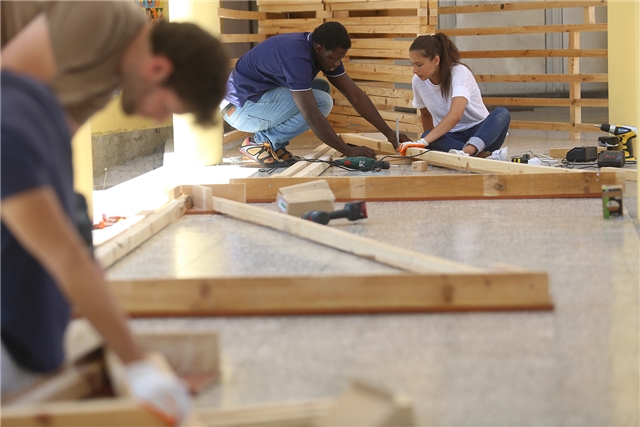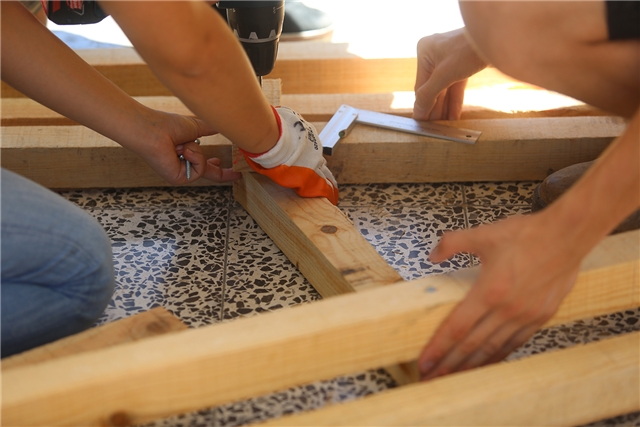Estructura para celebrar los diez años del teatro municipal con programa complementar de debates, exposiciones, actuaciones y actividades para niños. Proyecto de auto-construcción con alumnos universitários. 2015, Almada, Portugal.
Usually a scenography in theater appears as a consequence of a certain text and a certain sequence of actions. Could we conceive it in the opposite direction? Would it be possible to use space as a way of anticipate and contribute the whole action as an outline condition? The scenography, or as we would argue, the Architecture itself, might influence the play and favor for certain actions instead of some others in an informal and none imposed way. Space, text and action could come together in a non hierarchical order and in a close relation and intimacy. Rossi says that "theater has to do with the happening: his beginning, development and conclusion. Without happening there's no Theater and there's no Architecture".
POVERA Pavilion was conceived for the Almada Theater Festival in order to celebrate the 10th anniversary of the Blue Theater (Teatro Municipal Joaquim Benite, by Manuel Graça Dias and Egas José Vieira). It is an elliptical structure made out of pine wood with a rough finishing which exposes and accepts his artisanal condition as an added value. It was developed and build together with a group of seven students. The small triangular element that is usually used in theater as a physical support for the bidimensional scenogaphies (and hidden behind the stage) was redraw as a new element that generates the whole project. The invisible element is taken from his original context and used with very different proportions as to assume itself as the central element. A column and a beam in both extremes give stability to the overall structure and define the entrance. Those crucial constructive elements appear almost with a figurative character due their flat finishing, color and position since they are facing the two existing theaters there.
POVERA recuperates the central spatial typology from some medieval theater representations. And it also reports to the idea of the roman amphitheaters since they were conceived as a formal combination from the classical theaters and they introduced the elliptical stage as well as a subtle different funtion. The proposed pavilion for the theater festival tries to rescue some spatial patterns of those spaces and to explore the relation with the whole event and context. Nevertheless it is propositive facing it democratization: The stage and the audience area are in one and the same space. The audience lives the condition of the actor and contributes in a very active manner. The actor lives the condition of the audience as he observes and analyses the whole action. The main space for the action is "the empty space", the apparently unbuilt space. The action builts itself in there. The space is defined but not closed so everyone can see it from the outside as well. It indicates some spatial assumptions and might influence different actions without imposing any.
In his book "Atlas do corpo e da imaginação" (Atlas of the body and the imagination) Gonçalo M. Tavares talks about the construction of situations in two types: the receptors movements of existence, the ones that adapt themselves by receiving the actions in a passive way, and the emitting movements of existence, the ones that work in the opposite way by proposing and changing the circumstantial conditions. POVERA is located just in the middle point between the entrance of the Festival area and the entrance to the main stage and the people is invited to walk through the space where a performance is taking place. It starts before the first person has arrived and finishes after the last one has left, with no one. The audience is invited to see and to make part of the play simple by passing thought and change the action. So the audience is simultaneously receptor and emitter of movements inside the stage that at the end is the life itself, it's the routine, the ritual and the everyday life. Is it really true that "theater is the place where the Architecture ends and the world of the imagination and the foolishness begins"?



